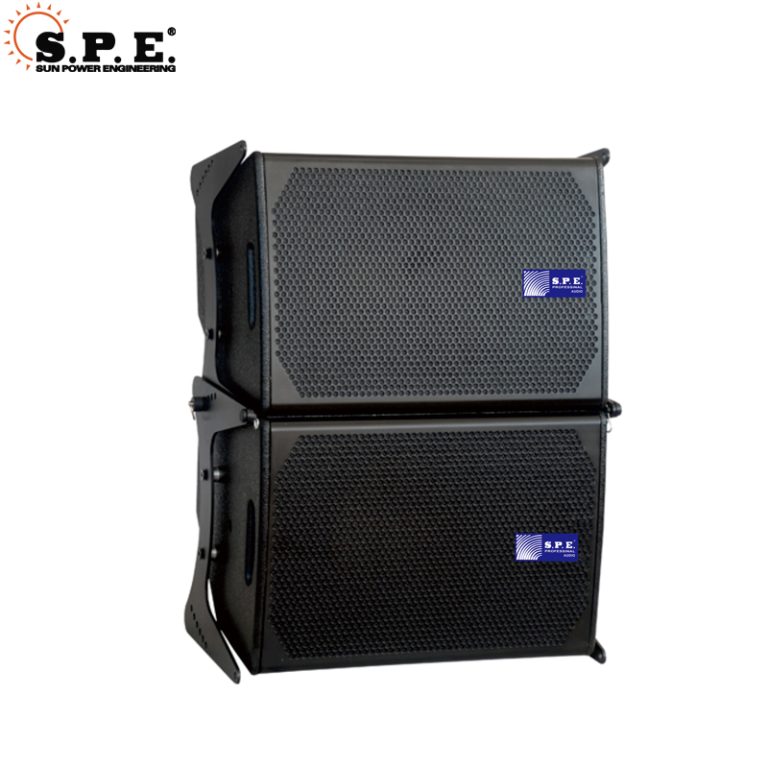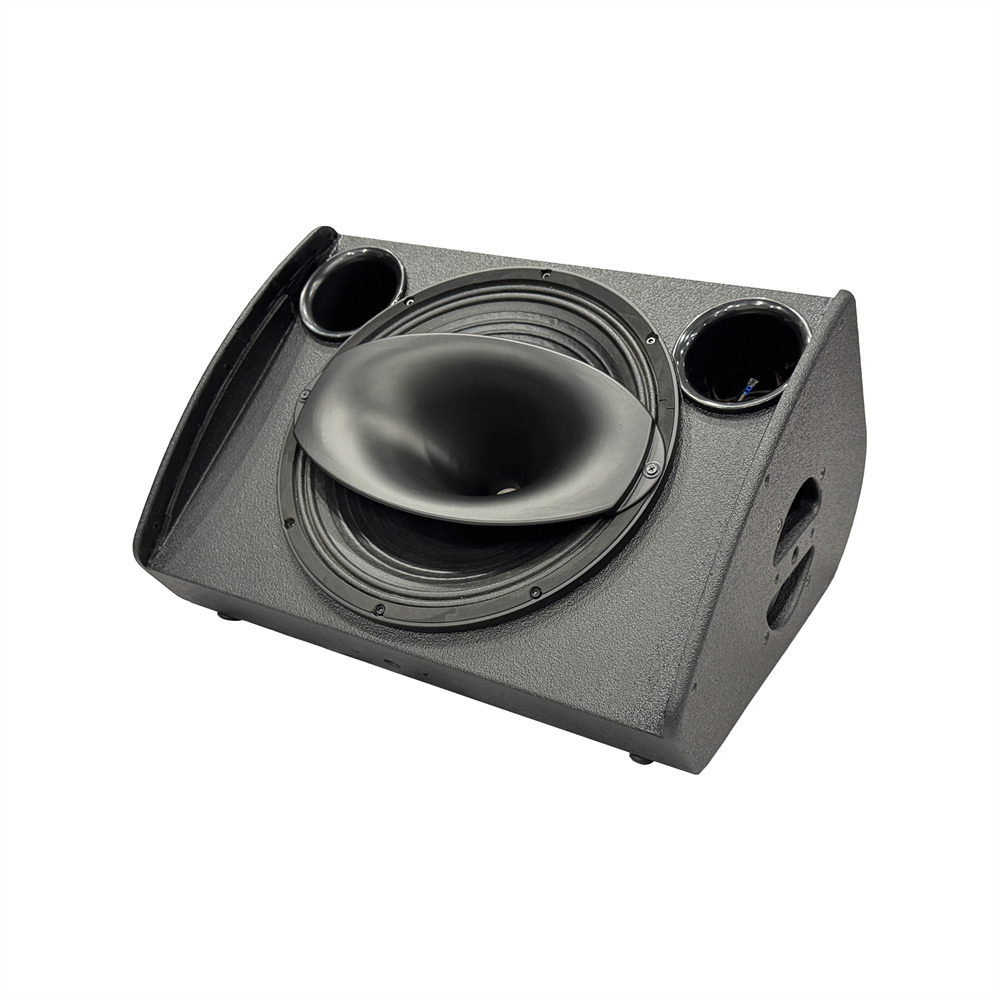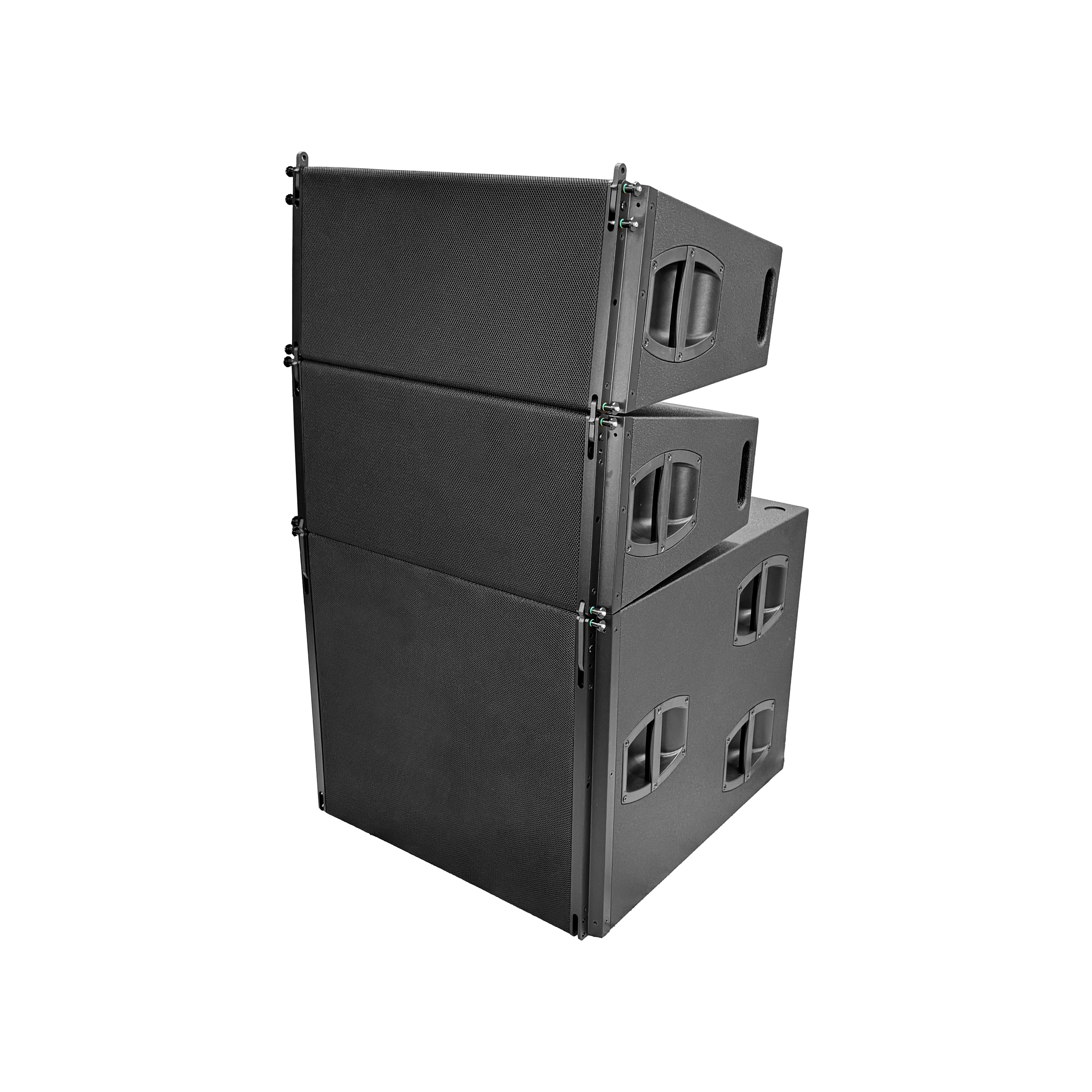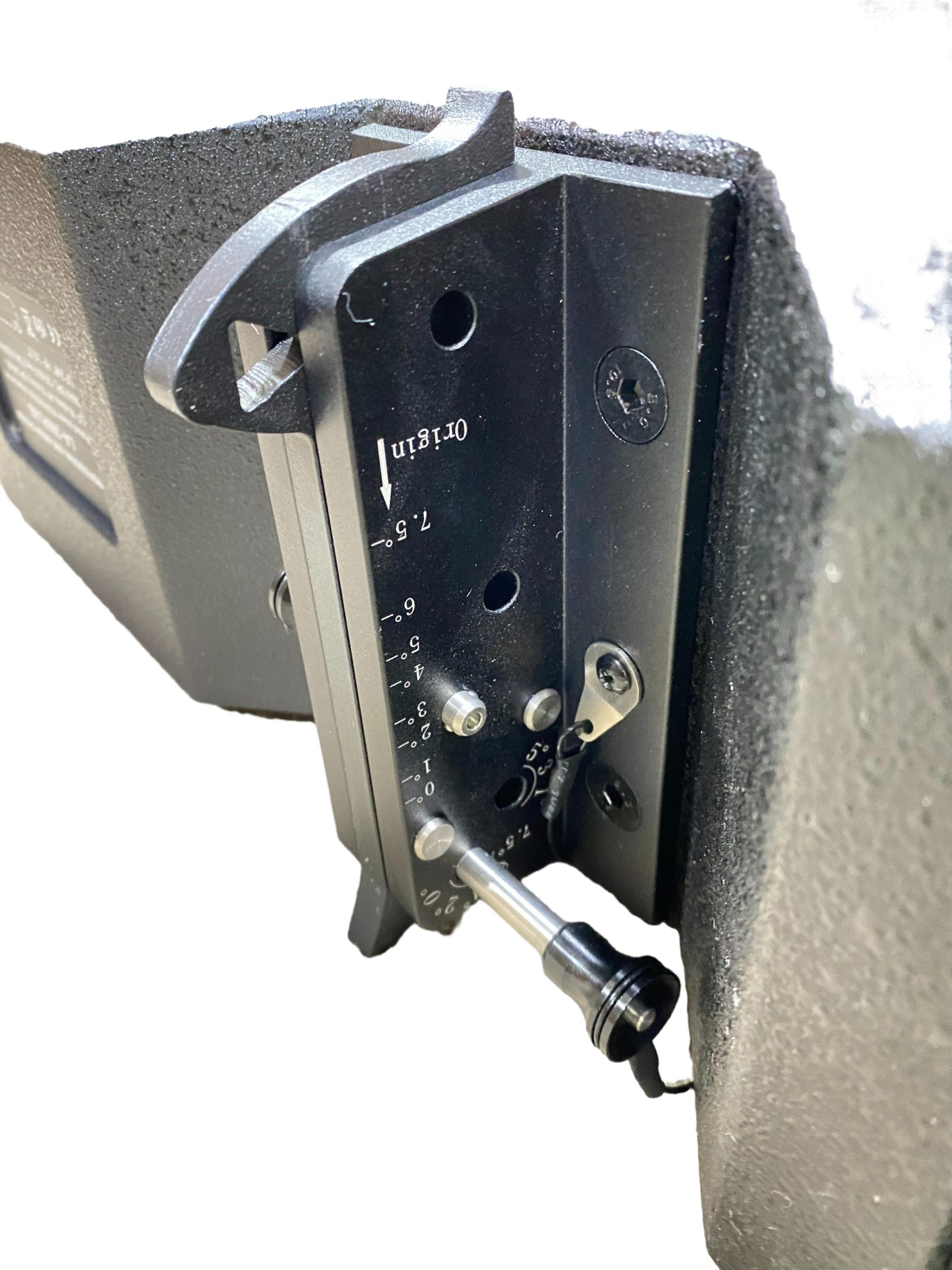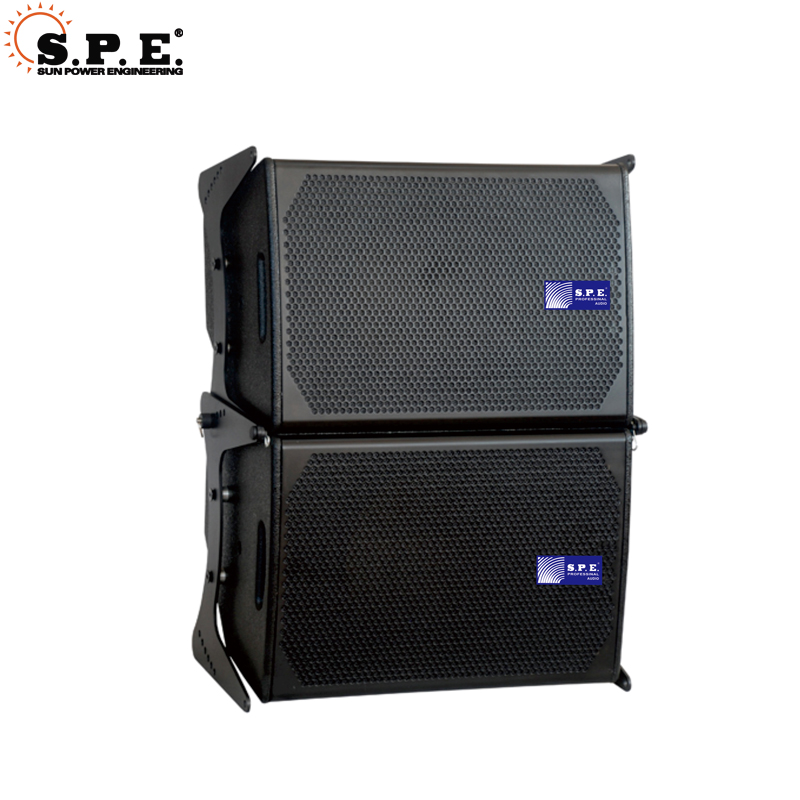The Physics of Line Array Technology: Why Configuration Matters
Line arrays work on the principle of acoustic coupling. When multiple loudspeakers are arranged in a vertical line and spaced closely together (typically within ¼ wavelength of the highest frequency), they behave as a single, continuous line source. This configuration provides critical advantages over point-source speakers: a coherent wavefront that reduces spherical spreading and provides precise vertical pattern control. The 10-inch driver strikes a strategic balance in this setup. It offers a significant surface area for solid mid-frequency output and punchy low-mid projection, while its smaller size (compared to 12″ or 15″ drivers) allows for a tighter vertical center-to-center spacing. This tight spacing is what enables the array to maintain pattern control to a higher frequency, minimizing ceiling and floor reflections and delivering clearer sound to every listener in a large audience.
The 10-Inch Driver: The Strategic Sweet Spot for Modern Arrays
The choice of a 10-inch driver is a deliberate engineering decision for specific performance goals. It is not a compromise but an optimization. A 10-inch woofer excels in the critical 80 Hz – 1.2 kHz range, providing the articulation and punch for vocals, guitars, and kick drums that larger drivers can sometimes smear. Its smaller, lighter cone has faster transient response, resulting in superior clarity and definition. This allows a 10-inch line array to often forego a dedicated mid-range driver, simplifying the crossover and enclosure design. However, this focus comes with a trade-off: reduced very low-frequency output. Consequently, a 10-inch line array system is almost always deployed with accompanying subwoofers to handle the sub-100 Hz range, creating a full-spectrum, high-clarity sound reinforcement solution ideal for spoken word, modern music, and portable applications.
Waveguide and Compression Driver Integration: Managing the Highs
The performance of a line array is dictated as much by its high-frequency component as its woofers. A 10-inch array module integrates a precision waveguide that couples a high-frequency compression driver to the acoustic elements below it. The design of this waveguide is paramount. It must ensure seamless acoustic transition between the 10-inch drivers and the HF driver, maintaining a consistent vertical dispersion pattern (e.g., 5-10 degrees) and a wide horizontal pattern (typically 90-120 degrees). The goal is to create a coherent “curtain” of sound. Modern designs often use constant-directivity waveguides and phase plugs to achieve smooth frequency response both on and off-axis, ensuring consistent tonality across the entire coverage area.
Design Trade-Offs: 10-inch vs. Other Form Factors
| Design Aspect | 10-inch Line Array | 12-inch Line Array | 8-inch Line Array |
|---|---|---|---|
| Primary Strength | Clarity & Punch in Low-Mids, Portability | Output & Low-Mid Weight | Maximum Portability, HF Pattern Control |
| Frequency Response | Excellent 100Hz – 1.2kHz | Excellent 80Hz – 1kHz | Excellent 120Hz – 1.5kHz |
| Typical Use Case | Live Music Venues, Corporate AV, Portable Production | Large Live Sound, Touring | Installation, Front-Fill, Portable Mini-Arrays |
| Subwoofer Dependency | High (Requires subs below 100Hz) | Moderate (Can run fuller-range) | Very High (Requires subs below 120Hz) |
| Weight & Size | Moderate, Highly Manageable | Larger, Heavier | Compact, Very Light |
Enclosure Design, Rigging, and Curvature
The cabinet itself is a critical component of the acoustic design. For a 10-inch line array, enclosures are typically designed to be as narrow as possible to achieve the tightest vertical driver spacing. The material is usually multi-ply birch or a composite to ensure rigidity and eliminate unwanted resonances. The integrated rigging system is what transforms individual boxes into a cohesive array. This system allows technicians to adjust the inter-cabinet splay angle—the angle between each module. By curving the array (using a J-curve or precise splay angles), the sound coverage can be mechanically steered to precisely match the audience area, from the front row to the back of a large arena, ensuring even SPL distribution.
Amplification and System Processing (DSP)
Modern 10-inch line arrays are rarely passive. They are designed for bi-amp or tri-amp operation, requiring dedicated amplifier channels for the low-frequency drivers and the high-frequency compression driver. This is where system-specific DSP becomes non-negotiable. The DSP doesn’t just provide crossover and limiting; it contains meticulously crafted presets that provide phase alignment, EQ correction for the waveguide, and protection for the drivers. This processing compensates for the inherent acoustic characteristics of the enclosure and ensures the array performs as designed, providing a plug-and-play solution for system engineers.
Q&A: Line Array Design FAQ
Q: How many 10-inch boxes do I need for a small concert?
A: The number is highly dependent on the venue size and required SPL. A common rule of thumb is that a single, well-designed 10-inch array module can cover about 50-100 people with high-quality sound. For a club of 500 people, a left/right array of 3-4 boxes per side is a typical starting point, always accompanied by subwoofers.
Q: Can I use a 10-inch line array outdoors?
A: Yes, but their performance is more affected by wind and lacks natural boundary reinforcement from walls. Outdoor use often requires more boxes and more powerful subwoofers to achieve the same perceived loudness and low-end impact as indoors. Careful splay angle calculation is even more critical to avoid throwing sound away from the audience.
Q: What is the “J-curve” in an array?
A: The “J-curve” refers to the practice of using tighter splay angles between boxes at the top of the array (to throw sound farther to the back of the venue) and wider splay angles at the bottom (to cover the near-field audience). This configuration resembles the shape of a “J” when viewed from the side and is essential for even front-to-back coverage.
Q: Why is DSP so important for these systems?
A: A line array is a complex system of interacting components. The DSP preset provided by the manufacturer is the result of extensive anechoic measurement and tuning. It aligns the acoustic phase of the drivers, corrects for response anomalies caused by the waveguide and enclosure, and sets optimal crossover points and limiters to protect the hardware. Using the system without its intended DSP is like putting racing tires on a car without doing an alignment.

